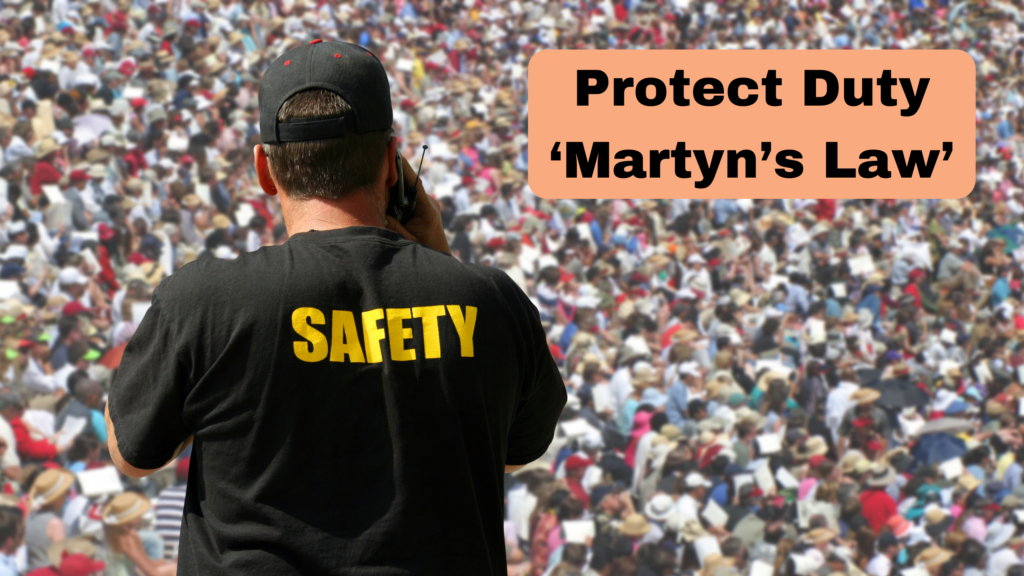Seven out of 10 respondents to the UK Government’s ‘Protect Duty’ public consultation agreed that those responsible for publicly accessible locations should take appropriate and proportionate measures to protect the public from attacks. This included ensuring staff were trained to respond appropriately.
In 2021, between February and July, the Government launched the consultation to ascertain how it might use legislation to protect publicly accessible locations across the UK from terrorist attacks and ensure organisational preparedness.
2,755 responses were received from various organisations, sectors and campaigners, with the majority supporting the Government’s proposals to introduce more robust measures, including a legal requirement for some public places to ensure preparedness for and protection from terrorist attacks.
Although there was no mention of specific technology solutions to be used, there is a recognition that adequate security requires a partnership approach, with Government, police, the security services, the wider public sector, businesses, and the public all having a role to play. The Government said that if a legislative Protect Duty were to be introduced, Government support for all organisations within its scope would have to be enhanced.
Steven Kenny, Industry Liaison, Architecture & Engineering at Axis Communications, pointed out, “Axis welcomes the response from Government and, indeed, from the majority of respondents to the consultation who support stricter security measures to ensure preparedness for and protection from terrorist attacks. It is clear now that the Government intends to take legislation to create a security culture, with a consistency of application and a greater certainty of effect.
“Axis is not surprised that no mention is made of the use of security technology directly; Axis maintained from the outset that physical security systems would not be a central requirement of the Protect Duty. Of note, however, were the extreme views expressed regarding the need for accountability and the majority’s opinion that a threshold of 100 persons or more should determine venues in the scope of the Duty.
“It is to these two areas that our physical security technology solutions are best aligned. Technology is a force multiplier that can improve operational efficiency, accelerate decision making and, most importantly, help businesses that cater to larger footfalls demonstrate compliance. While not a substitute for practical due diligence and sound staff training processes, we firmly believe that a combined physical and behavioural interventions system remains best practice where such an approach is deemed necessary following a risk assessment.
Eaton’s MD, UK and Ireland, Siobahn Meikle, said, “The Government’s response is a positive step forward, but in the proposals that follow, there’s an opportunity to go even further by making sure legislation encourages individuals and businesses that have a protective duty to employ emergency systems that are more adaptive and interconnected so that people are alerted to threats and guided away from them more quickly and safely.
“We know that inaction or the ‘bystander effect’ is a real issue in attacks that happen in high-density venues – with some people not responding to alerts. In such an event, shortening people’s response to an evacuation or stay put strategy can save lives. The first 60 seconds of an alert sounding are critical because the time it takes for people to recognise a threat is the most variable in an evacuation.
“The interconnected technology exists to adapt to threats in real-time. As any future legislation makes is way through parliament, we hope that the opportunity is taken to encourage businesses to implement layered, connected and adaptive emergency systems that will optimise the safety of their venues”.
Kenny concluded, “What is critical, above all, is that businesses make the right choices regarding existing set-ups and new projects. Greenfield developments, in particular, would warrant a closer examination of the legislative approach now in progress to plan for compliance. While selecting appropriate security tools should not be an onerous process, making the right investments will ensure compliance with the Duty and deliver the highest levels of physical security protection.”
*The Protect Duty is also known many as ‘Martyn’s Law.’ Martyn was one of the 22 people killed in the Manchester Arena attached in 2017. As a result, his mother started a petition for stricter security measures.



